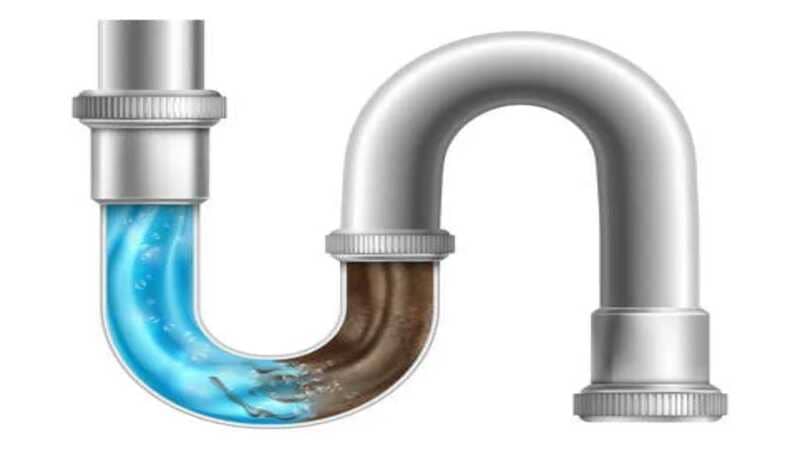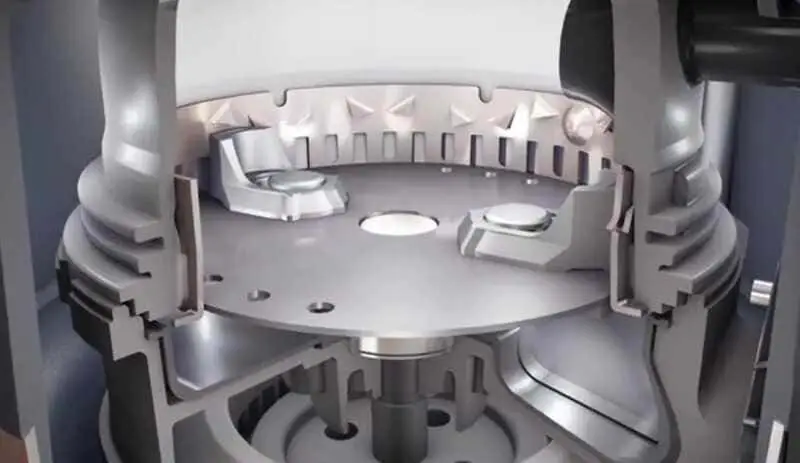The garbage disposal is a very useful tool in the kitchen, but we often forget that it requires some maintenance to ensure proper operation and extend its life.
One of the key aspects of garbage disposal maintenance is the tightening of the blades, since, with continuous use, they can become loose and cause problems in the performance of the equipment.

That’s why, in this article, we’ll explain how to tighten your garbage disposal blades easily and without hiring a professional. Read on to learn everything you need to keep your garbage disposal in top condition and avoid unnecessary expenses.
Importance of tightening garbage disposal blades.
Tightening your garbage disposal blades is important because, with continued use, vibrations and impacts can loosen and dislodge them, which affects their performance and can cause problems in the operation of the equipment. If the blades are loose, they can hit the disposer housing and cause annoying noises, or even cause damage to the motor or electrical system.
In addition, a garbage disposal with misadjusted blades may also have difficulty shredding food efficiently, which can lead to clogged pipes and shorten the life of the equipment.

Therefore, how to tighten garbage disposal blades is essential to ensure optimal operation and prolong the life of the equipment.
Steps to be taken before tightening the disposer blades.
Before proceeding to tighten the disposer blades, it is important to take certain precautions to ensure the safety and proper functioning of the equipment. First of all, it is essential to disconnect the disposer from the electric current to avoid possible accidents. Once disconnected, it is advisable to remove any objects that may obstruct access to the interior of the disposer, such as food debris, cutlery or other utensils.
After removing any object that could interfere with the blade tightening process, it is recommended to check the condition of the blades and make sure they are not damaged or worn. If a damaged or worn blade is found, it is advisable to replace it before proceeding to tighten the other blades, since a blade in poor condition can affect the performance of the equipment and reduce its useful life.
In addition, it is important to have the necessary tools to carry out the blade tightening process. An adjustable wrench or socket wrench is usually required to access the nuts that secure the blades. It is important to make sure you have the proper tool before starting the process to avoid delays or possible damage to the equipment.
Finally, it is important to have adequate space to carry out the blade tightening process. It is advisable to use a flat and stable surface, and to work in a comfortable position that allows easy access to the blades. With these previous steps completed, you are ready to proceed with tightening the disposer blades safely and effectively.
Tools needed to tighten garbage disposal blades.
For how to tighten garbage disposal blades, you need some basic tools that will allow you to access the nuts and tighten them securely and effectively. These tools include:
Adjustable wrench: this is a tool that is used to tighten nuts and bolts of different sizes. It is an essential tool for tightening the garbage disposal blades, as it allows you to adjust the blade fixing nuts accurately.
Pipe wrench: this is a tool similar to the adjustable wrench, but is specifically designed to tighten fixed size nuts. If the attachment nuts on your garbage disposal blades are a specific size, you may need a socket wrench to adjust them properly.

Screwdriver: a tool used to tighten or loosen screws. Although not essential for tightening the disposer blades, you may need a screwdriver to remove the disposer cover and access the blades.
Work gloves: It is recommended that you wear work gloves to protect your hands from possible cuts or injury during the blade tightening process. Gloves can also help provide a better grip and prevent hands from slipping while tightening nuts.
It is important to make sure you have the proper tools before proceeding to tighten the disposer blades, as using improper or missing tools can hinder the process and increase the risk of equipment damage or injury.
How to tighten garbage disposal blades step by step.
How to tighten the garbage disposal blades is a relatively simple task that can be done by following these steps:
1- Unplug the garbage disposal: it is important to disconnect the equipment from the electrical power before proceeding to tighten the blades. This will avoid possible electrical accidents during the process.
2- Access the blades: remove the disposer lid to access the blades. It may also be necessary to remove any food debris in the disposer chamber in order to access the blades.
3- Check the condition of the blades: before proceeding to tighten the blades, check their condition to make sure they are not damaged or worn. If you find any damaged or worn blades, replace them before tightening the others.
4- Tighten the nuts: use the adjustable wrench or socket wrench to tighten the nuts that secure the blades. Be sure to tighten each nut with the same amount of force to avoid unbalancing the rotor. In general, it is recommended to tighten the nuts until the blades are securely fastened but can still rotate with some resistance.

5- Replace the lid: once you have tightened the blades, replace the disposer lid and make sure it is securely fastened.
6- Test the garbage disposal: Once the tightening process is complete, plug the garbage disposal back in and test it to make sure the blades are working properly.
It is important to note that while tightening the disposer blades is a simple task, it is essential to follow proper safety precautions and use the correct tools to avoid potential accidents or damage to the equipment.
How to tell if your garbage disposal blades need tightening.
Disposer blades can become loose over time due to regular use of the equipment. If the blades are not tightened properly, they can generate noise, excessive vibration and reduce the performance of the disposer. To find out if your garbage disposal blades need to be tightened, you can follow these steps:
1- Listen to the sound of the disposer: If you hear a clanking sound or a metallic noise while the disposer is running, it may be a sign that the blades need to be tightened. This noise occurs when the blades hit each other because they are loose.
2- Watch for excessive vibrations: If the disposer produces excessive vibrations while it is running, this may also be a sign that the blades are loose. The vibrations may be due to the blades not being balanced properly, which can occur when one or more blades are loose.
3- Check for water leaks: If you notice water leaks around the garbage disposal, this may be a sign that the blades are not tightened properly. Leaks may be due to damaged pipe seals due to excessive vibrations caused by loose blades.
4- Check the disposer’s performance: If you notice that the garbage disposal takes longer than usual to process food, or if you have to run the food through it several times to get it to grind properly, this may be a sign that the blades are not tightened properly and are not spinning at the right speed.
If you notice any of these signs, it is likely that the garbage disposal blades need to be tightened. In this case, it is advisable to follow the proper steps to tighten the blades and restore the performance of the equipment.

